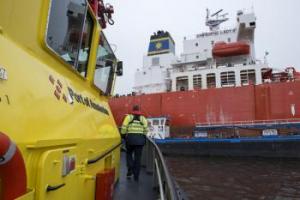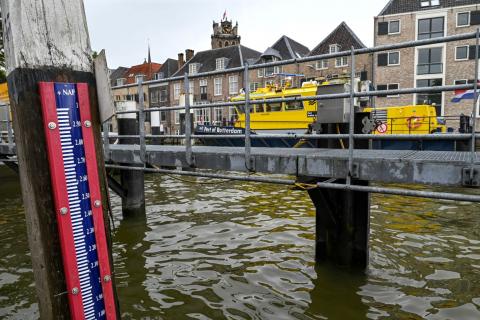Harbour Master
Harbour Masters
Worldwide there are approximately 3,000 merchant ports and the work of the Harbour Master can vary widely from country to country and from port to port even within the same country.


The Normal Amsterdam Water Level (NAP) has been used as the basis for Vessel Traffic Services in the port of Rotterdam for some 200 years. On 1 July, the Port of Rotterdam Authority will abandon NAP in shipping communication. As from that day, it will use the Approximate Lowest Astronomical Tide (ALAT) as a reference for water depths and water levels in the admission policy. Internationally, this reference is common practice in shipping.
“The adjustment is in line with the Port Authority’s aim to come to a high degree of international standardisation, as this is a major condition for digitising Vessel Traffic Services,” says René de Vries, (State) Harbour Master of Rotterdam.
LAT is the lowest tide level forecast under astronomic conditions. The new reference came about in collaboration with the Directorate-General for Public Works and Water Management (Rijkswaterstaat) and the Hydrographic Office. The port joins the users of this international language for water depths and water levels, with more efficiency and safety as a result. For the time being, the water depths and levels will be indicated in both ALAT and NAP in the various documents issued by the Port of Rotterdam Authority.
Port Call Optimisation is the international cooperation between the Port Authority, shipping companies and other ports to make the port call process more efficient. Meanwhile, the first port information has become standardised according to international criteria. This information concerns berth information, the exact determination of maximum draught for every berth position on the basis of real-time information and automatic calculation of tidal windows.
The International Harbour Masters Association (IHMA) and the Port of Rotterdam Authority are pleased to announce the 15th International Harbour Masters Association Congress, to be held from 09–12 June 2026 at Theater Zuidplein in Rotterdam.
Naresh Sewnath, Senior Harbour Master at Transnet National Ports Authority (TNPA) in South Africa’s Port of Durban, began his maritime career back in 1988. He started out as a cadet with TNPA (then known as South African Transport Services (SATS).